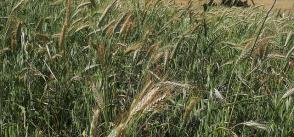
Pushing toward the integration of crop-livestock and conservation agriculture
Reliance on crop residues to feed livestock has hindered the adoption of conservation agriculture.
A modern farming town in northern Tunisia, Siliana is one of the first places in this progressive North African country of 11 million people to adopt conservation agriculture and its use in crop-livestock systems. At a gathering of the town’s professional farmers’ association, the members were eager to discuss successes and challenges.
The SMSA, as the association is named, started with three farmers working on conservation agriculture during the first phase of the IFAD-funded project for “Crop-Livestock System and Conservation Agriculture,” also known as CLCA around here. They minimized the disturbance of the soil, kept crop residues to maintain soil cover, and rotated crops. Often referred to as the three pillars of conservation agriculture, this practice helps mitigate soil nutrient depletion and land degradation, while increasing yields. It brings optimal production at the best cost.
Now with 50-some members, the SMSA has brought together the town’s farmers to implement conservation agriculture in their semi-arid climate and mixed-farming systems. The association also functions as a link to national and international agricultural organizations.
“Since adopting conservation agriculture, we have saved 30% in fuel and labor,” said Nabil Sahli who acts as the group’s treasurer. “And we did this without any subsidies from the government,” Sahli added proudly. After three years of conservation farming, the SMSA’s annual sales has reached 127,000 Tunisian dinar (about $50,000), a substantial sum for the district’s three villages.
Conservation agriculture uses specialized zero-tillage seeders to plant seeds directly into undisturbed soil, along with the fertilizer. This improves the soil fertility. Less cultivation has meant less fuel used in preparing the land, and more time for farmers for activities. It has reduced seed and fertilizer inputs through precision planting and better placement of fertilizer, cutting production costs and upping efficiency.
Read the full article and watch the video via ICARDA dryWire.
[Photo by ICARDA - Science for Resilient Livelihoods in Dry | Flickr]







